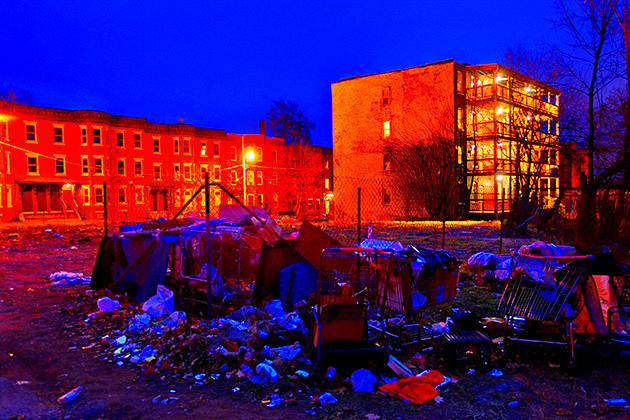Life in the slums of USA is a picture showing how people should be strong and struggle. The chosen areas are always out of sight because they are flimsy houses full of realities for everyday people.It is not only about being pennyless but it is something more; it is a matter of community, existing and the human soul. By sharing pictures, we depict stories by the numbers, revealing underlying factors because the real life procedures unfold before our eyes.In addition, this exploration engages in exposing what many individuals endure in an attempt to appreciate the resilience characteristic of these places.
Challenges Faced by Residents

Life for slum dwellers is full of challenges. Some of their main problems are:
- Housing Quality: Many homes are poorly built and lack basic amenities.
- Limited Access to Healthcare: Residents often struggle to find affordable medical services.
- Education Barriers: Schools may be underfunded, leading to a lack of resources for children.
- Job Opportunities: Unemployment rates are high, and many work in low-paying jobs.
- Crime Rates: Increased crime can create an unsafe environment for families.
These difficulties create a cycle of poverty that is not easy to break but many people living there learn how to find ways and help one another.
Impact of Poverty on Daily Life

In the United States, slums feel the impact of poverty daily, as it influences everything from access to food to personal relationships. The following are some vital effects:
| Aspect | Impact |
|---|
| Food Security | Limited access to nutritious food often leads to health issues. |
| Transportation | Public transport may be unreliable, making it hard to get to jobs or schools. |
| Social Isolation | Financial struggles can lead to stress, impacting relationships with family and friends. |
| Mental Health | Constant financial strain can contribute to anxiety and depression. |
Notwithstanding these adversities, the local people usually draw power from the friends and relatives which they have, thus showing how significant social relations are in conquering tribulations.
Community and Resilience in Slum Areas

Community plays a significant role in survival for those living within impoverished neighborhoods. Community members unite to tackle various obstacles, pool resources as well as offer emotional support to each other. This feeling of belongingness is very important for their endurance.Exploring how community bonds develop and reinforce them would be worthwhile:
- Shared Resources: Neighbors often share food, tools, and other essentials to make ends meet.
- Mutual Support: Families provide emotional support during tough times, creating a safety net.
- Community Events: Festivals and gatherings foster a sense of unity and joy amidst struggles.
- Collective Action: Residents often come together to address local issues, from improving safety to advocating for better services.
In addition to assisting persons in dealing with life's challenges, this sense of belonging also enable them to improve their living standards. In spite of the issues these neighborhoods face, they show that togetherness is the key to survival.
Art and Expression in Difficult Circumstances
Art, particularly in the slums where no other means of expression seem to be there, can become a very effective medium of expression. To express their messages, hopes and dilemmas, the locals resort to art.The following is an examination of how art thrives in these situations:
- Street Art: Murals and graffiti bring color to the community, telling stories of resilience and hope.
- Performing Arts: Dance and theater often become ways to express emotions and experiences.
- Crafts and Handmade Goods: Residents create beautiful items from found materials, showcasing their creativity.
- Photography: Capturing everyday life allows residents to document their experiences and share them with the world.
These modes of expression provide a platform for people to voice their thoughts and convey their truth, which leads to a better comprehension of existence in slums.
Role of Nonprofits and Volunteers
Nonprofits and volunteers play a crucial role in supporting slum communities. Their presence helps address many of the challenges faced by residents.Here are some key ways they contribute:
| Contribution | Description |
|---|
| Educational Programs | Providing tutoring and resources helps children get better education opportunities. |
| Healthcare Services | Offering free or low-cost medical care improves health outcomes for residents. |
| Job Training | Helping individuals develop skills increases their employability and income potential. |
| Community Building | Organizing events fosters connection and strengthens community bonds. |
Beyond providing essential services, nonprofits and volunteers instill hope in them whilst motivating inhabitants to strive for a better tomorrow.
Visual Storytelling Through Photography
US slums are full of life and essence as reflected through photography. The stories it tells are sometimes beyond words, allowing us to see what these people go through. With a camera, beauty, struggle, and survival in these neighborhoods become alive.Here’s how photography plays a crucial role in visual storytelling:
- Documenting Daily Life: Photographers capture everyday moments, showcasing the simple joys and challenges faced by families.
- Highlighting Community Spirit: Images of gatherings and events reflect the unity and strength of the community.
- Raising Awareness: Powerful images can spark conversations and increase understanding of the issues in slum areas.
- Encouraging Empathy: Seeing the lives of others can foster empathy and inspire action among viewers.
By means of visual narratives, photography not only retains reminiscences but also links individuals stemming from dissimilar realms, assisting them in perceiving the humanity concealed within labors.
FAQ About Life in USA Slums
Many questions are raised by the dwelling places of people in the United States. The following is a list of some common questions and answers that can improve the understanding one has about them.
| Question | Answer |
|---|
| What causes slum development? | Rapid urbanization, poverty, and lack of affordable housing contribute to the growth of slums. |
| Are all slums the same? | No, each slum has its unique characteristics, culture, and challenges. |
| How do residents cope with challenges? | Through community support, resource-sharing, and resilience, residents find ways to adapt. |
| Can slum areas improve over time? | Yes, with investment, advocacy, and community efforts, many slum areas see improvements. |
This clears up some confusion about the ways of life in these slum areas, stereotypical perceptions and stresses the practical aspects that people meet.
Conclusion on Understanding Slum Life
To comprehend how lives are lived in the ghettos of the United States requires more than mere figures; it calls for consideration of individual experiences behind those interminable statistics.Many problems confront these communities, yet people demonstrate incredible strength when they unite as one.For some artists and photographers, beauty exists within chaos, helping others to build new lives from old foundations. They have crafted their own ways of living despite the challenges.It is essential to recognize that by highlighting these experiences, we motivate ourselves to engage positively with others facing similar conditions.Spreading illumination on these neighborhoods can foster a greater understanding of poverty, inspiring action aimed at improving living standards.
 Life for slum dwellers is full of challenges. Some of their main problems are:
Life for slum dwellers is full of challenges. Some of their main problems are: In the United States, slums feel the impact of poverty daily, as it influences everything from access to food to personal relationships. The following are some vital effects:
In the United States, slums feel the impact of poverty daily, as it influences everything from access to food to personal relationships. The following are some vital effects: Community plays a significant role in survival for those living within impoverished neighborhoods. Community members unite to tackle various obstacles, pool resources as well as offer emotional support to each other. This feeling of belongingness is very important for their endurance.Exploring how community bonds develop and reinforce them would be worthwhile:
Community plays a significant role in survival for those living within impoverished neighborhoods. Community members unite to tackle various obstacles, pool resources as well as offer emotional support to each other. This feeling of belongingness is very important for their endurance.Exploring how community bonds develop and reinforce them would be worthwhile:
 admin
admin








